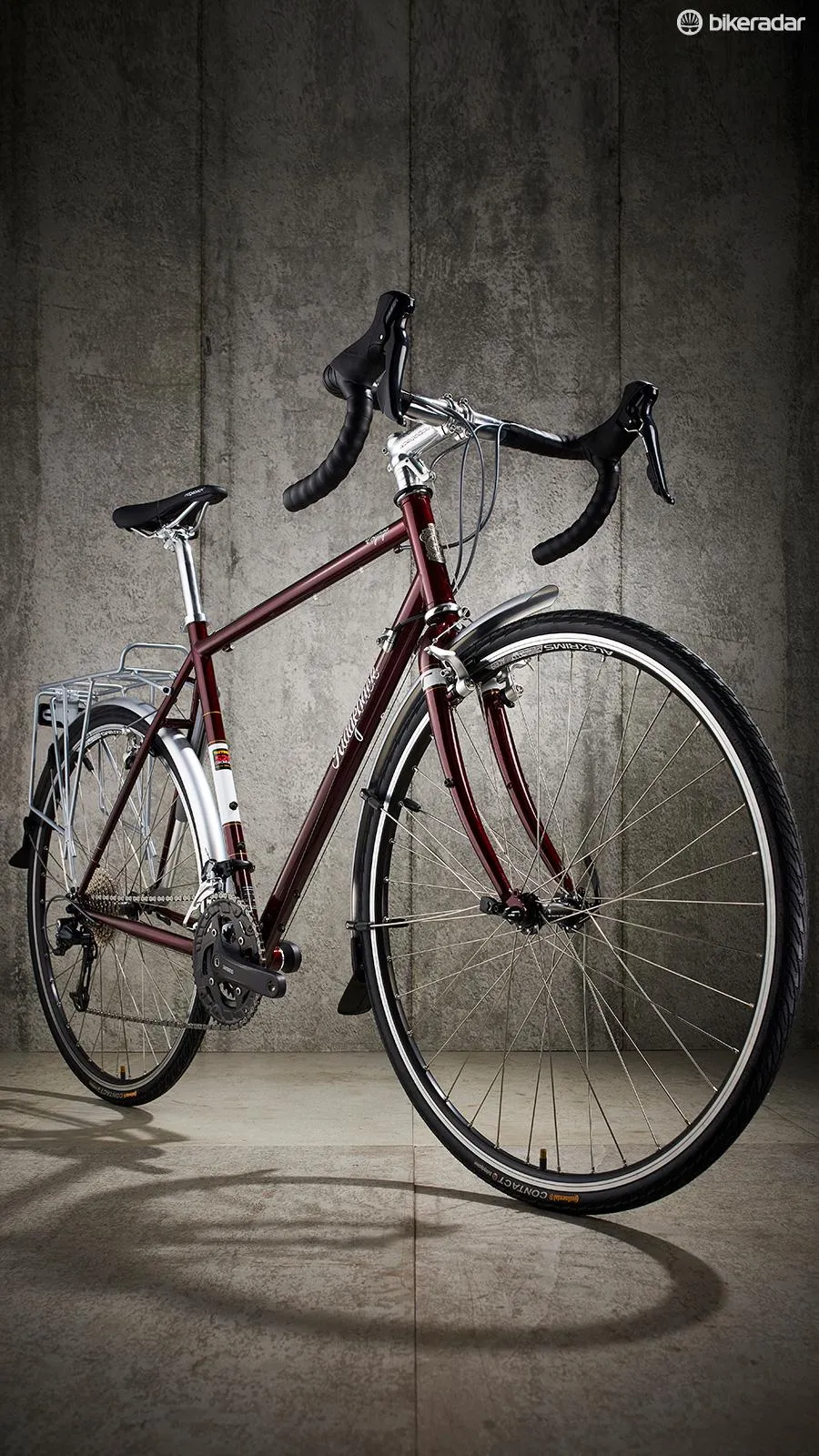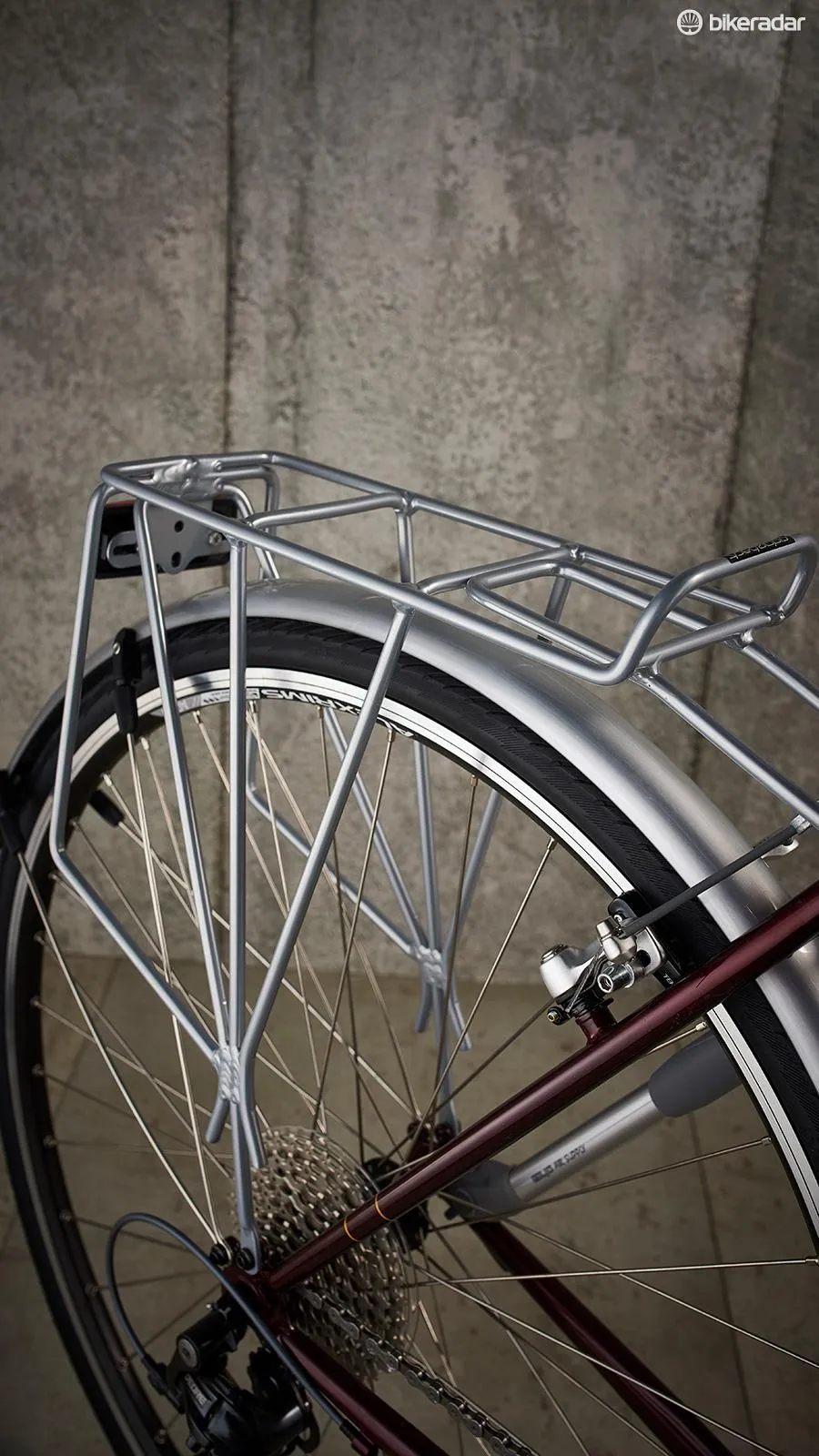Ridgeback’s Voyage is every inch the classic touring bike, from its chromoly steel frame and rear rack to its triple chainset and… wait for it… cantilever brakes. Blimey, first time we’ve seen them for a while, and while they look passé, fitting them does allow Ridgeback to kit out a bike based around Shimano Sora, with mudguards, pump and a rear rack, while still hitting a low price.
In many ways the Ridgeback is a step back in time, but there have been subtle changes from the bikes of yore. Thirty years ago steel tourers would have been made in their tens of thousands in Britain, and these would have been lugged and with horizontal top-tubes. Now we have neatly-TIG-welded-in-Taiwan tourers like this, complete with a skinny steel curved fork. Even the tubing — Reynolds 520 — is made in Taiwan under licence from Reynolds in the UK.
In spite of its comparatively narrow tyres and lack of any gravel-riding heritage, the Voyage proved surprisingly impressive on gravel and unsurfaced tracks
The bike’s touring intentions are clear from the get-go. The Shimano 48/36/26 triple chainset and 11-34 cassette will help you voyage over vertiginous landscapes even when your panniers are full to bursting, with the 26x34 pairing limiting the time you’ll spend straining up hills. You may not use it very often, but when you do need that granny gear both you and your knees will appreciate it big time. Meanwhile, the 48x11 top is a bigger gear than a 50x12, so you won’t be left wanting when you want to get up to speed.
The touring-friendly geometry takes in a long wheelbase, long chainstays and a shallow head angle. The head-tube isn’t overly tall, a stack of spacers helping you to get the correct position, which makes the bike very stable and the handling leisurely. All of these qualities come into their own for any non-speed-orientated riding, whether commuting, shopping, leisure riding or days or weekends away. The spacer stack also means that you can lower the bar, if you want to get a bit more head down, though the bike’s weight will limit all-out speed.

In spite of its comparatively narrow tyres and lack of any gravel-riding heritage, the Voyage proved surprisingly impressive on gravel and unsurfaced tracks, which shows the soundness of the design in the first place. It also coped with Bristol’s occasional cobbles better and more comfortably than we expected.
However, there are a few downsides. Compared with even quite modest cable discs, the Tektro Oryx cantis just couldn’t cut the mustard. They were ‘okay’, nothing more, lacking the stopping power of discs and most modern caliper set ups. Prolonged descents will leave you with aching hands too. You can’t swap to calipers as there’s no mount on the rear brake bridge, but you could go for mini V-brakes, though there could be implications for mudguard clearance.
Another slight oddity are the Schrader valves, hen’s-teeth-rare with us, but common all over the world. You could convert to Presta, using a grommet to fill the slightly larger hole in the rim.
The Venn diagram for the Voyage would easily take in commuting, leisure riding, club runs, audax and extended tours. Its low-key, old-school looks proved popular and it was a comfortable, enjoyable ride. It would have scored more but for the disappointing brakes, but the dearer Ridgeback Panorama offers both a higher-spec frame and disc brakes.




